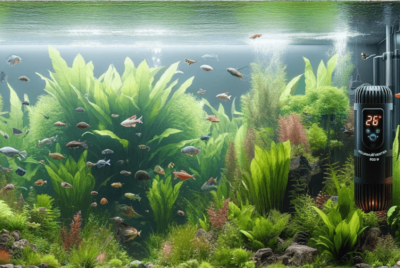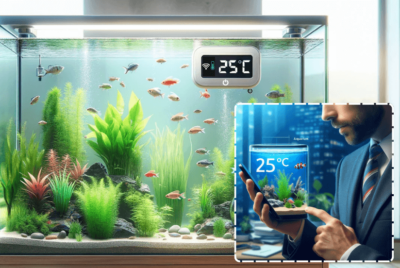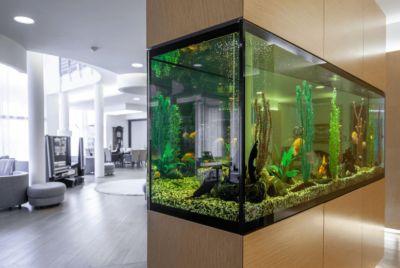How to Choose Aquarium Fish for Home and Office Aquariums
Introduction to Choosing Aquarium Fish
As an avid aquarium enthusiast, I deeply appreciate the significance of choosing the most suitable fish for your aquarium, whether it resides in the comfort of your home or graces the ambiance of your office space. The selection of the right fish transcends mere aesthetics; it plays a pivotal role in fostering a thriving aquatic ecosystem. Throughout this guide, I aim to impart invaluable insights and practical tips, empowering you to navigate the intricate process of fish selection with confidence and expertise. Together, let’s embark on a journey to create a harmonious and captivating underwater world within your aquarium.
Understanding Your Aquarium Environment
Understanding Your Aquarium Environment is fundamental before choosing fish. Delve into aspects like tank size, water conditions, and fish compatibility to foster a healthy aquatic habitat. Researching these factors ensures a harmonious environment, laying the groundwork for successful fishkeeping.
Ensure tank size suits your chosen fish species, maintain optimal water conditions, and select compatible tank mates. By aligning these elements, you pave the way for a thriving aquatic ecosystem, enhancing the well-being of your fish and simplifying maintenance tasks.
Researching Tank Size, Water Parameters, and Fish Compatibility
In the realm of aquarium keeping, achieving the perfect balance of tank conditions and fish compatibility is paramount for fostering a thriving aquatic ecosystem. From understanding the significance of tank size to mastering the nuances of water parameters and fish interactions, every aspect plays a crucial role in ensuring the well-being of your aquatic inhabitants. In this comprehensive guide, we delve into the essential considerations of tank size, water parameters, and fish compatibility, offering valuable insights and practical tips to help aquarists of all levels create an optimal environment for their beloved aquatic pets.
Tank Size
- Consider the dimensions and volume of your aquarium.
- Larger tanks provide more swimming space and stability in water parameters.
- Adequate space prevents overcrowding and territorial conflicts among fish.
- Research the specific requirements of the fish species you intend to keep to determine the appropriate tank size.
Water Parameters
- Monitor pH levels to ensure they are within the preferred range for your fish species.
- Maintain stable water temperature suitable for the species inhabiting your aquarium.
- Regularly test and regulate levels of ammonia, nitrite, and nitrate to prevent toxicity.
- Understand the water hardness and softness preferences of your fish species for optimal health.
Fish Compatibility
- Research the social behavior and compatibility of different fish species.
- Avoid mixing species with conflicting temperaments or territorial tendencies.
- Consider the size and activity level of fish to prevent aggression or predation.
- Create a balanced community by selecting fish that coexist peacefully and complement each other’s behaviors and traits.
Choosing Fish for Home Aquariums
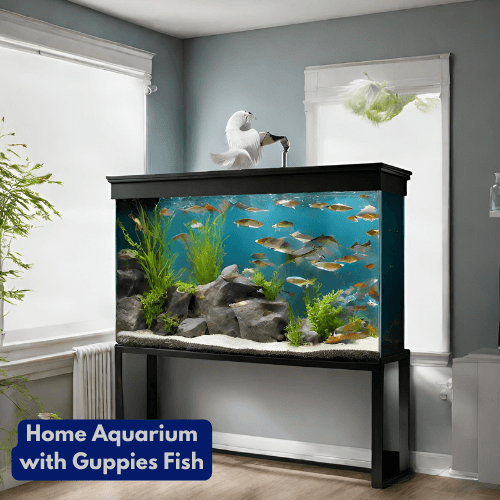
When it comes to setting up a home aquarium, selecting the right fish species is crucial, especially for beginners. Opting for fish that are beginner-friendly can ensure a smoother experience as they tend to be hardier and more adaptable to changes in tank conditions. Among the wide array of options available, freshwater tropical fish stand out as some of the most popular choices.
Tetras, guppies, and mollies are top contenders in the realm of beginner-friendly fish species. These colorful aquatic companions not only add aesthetic appeal to your tank but also bring lively energy with their active personalities. Their resilience and adaptability make them ideal for novice aquarists who are still getting the hang of maintaining a balanced aquarium environment.
Whether you’re looking to create a serene aquatic paradise or a bustling underwater community, these freshwater tropical fish are sure to captivate both seasoned hobbyists and newcomers alike. So, if you’re considering starting your own home aquarium adventure, these vibrant species could be the perfect starting point for you.
Selection of Beginner-Friendly Fish Species
Choosing beginner-friendly fish species is essential for new fishkeepers as it ensures a smoother experience and greater success in maintaining a healthy aquarium. These species are resilient, easy to care for, and tolerant of fluctuations in water conditions, making them ideal choices for beginners. Popular options like tetras, guppies, and mollies not only add vibrancy to the tank but also bring joy with their active behaviors, serving as friendly mentors for newcomers to the hobby. Starting with these beginner-friendly species sets the foundation for an enjoyable and successful fishkeeping journey, offering stability and confidence as beginners learn the ropes of aquarium maintenance and care.
Some popular beginner-friendly fish species include:
- Tetras: They are small, peaceful fish known for their vibrant colors and active swimming behavior. They are relatively low-maintenance and can thrive in a variety of tank setups.
- Guppies: They are small, colorful fish that are incredibly hardy and prolific breeders. They are ideal for beginners due to their ability to adapt to a wide range of water conditions.
- Mollies: They are another hardy and adaptable fish species that are suitable for beginners. They come in a variety of colors and are known for their peaceful nature.
- Swordtails: They are active and easy-to-care-for fish that can tolerate a range of water conditions. They are peaceful and can coexist with a variety of tank mates.
- Platies: They are small, colorful fish that are perfect for beginners. They are peaceful, easy to care for, and can add a pop of color to any aquarium.
Selecting Fish for Office Aquariums

When it comes to setting up an aquarium in an office environment, selecting the right fish species is crucial. Opting for low-maintenance options ensures that the fish can thrive in the relatively stable and peaceful atmosphere typically found in offices. Betta fish, neon tetras, and cherry shrimp emerge as top contenders for office aquariums due to their ability to withstand such conditions with ease.
- Bettas: Also known as Siamese fighting fish, bettas are popular choices for office tanks due to their striking appearance and hardy nature. They can thrive in smaller tanks and do not require elaborate setups, making them ideal for office spaces where space might be limited.
- Neon Tetras: They are another excellent option for office aquariums. With their vibrant colors and active personalities, these small, schooling fish bring life to any tank. They are peaceful and can adapt well to the subdued lighting commonly found in office environments.
- Cherry Shrimp: They add a unique touch to office aquariums with their bright red coloration and fascinating behavior. These tiny crustaceans are easy to care for and can thrive in planted tanks, contributing to a balanced ecosystem within the aquarium. Their presence can also serve as a calming influence in the office environment, promoting relaxation and stress relief for employees.
Considerations for Low-Maintenance Species
When choosing fish for an office aquarium, it’s important to focus on species that need minimal maintenance. These low-maintenance fish are perfect for office environments where they might not get as much attention as they would at home. Opting for low-maintenance species such as bettas, neon tetras, and cherry shrimp guarantees a hassle-free and enjoyable aquarium experience in office settings. Thanks to their resilience, minimal care needs, and adaptability to office conditions, these fish can enhance the ambiance and well-being of employees by bringing beauty and tranquility to the workplace.
Benefits of Having an Aquarium in the Office
Adding an aquarium to your office brings a multitude of benefits. Firstly, it creates a calming atmosphere, reducing stress and boosting productivity. Watching fish swim can help improve focus and concentration, making it easier to tackle tasks throughout the day. Moreover, an aquarium adds a touch of nature to the workspace, enhancing overall well-being and promoting a sense of tranquility.
Additionally, having an aquarium in the office fosters a sense of community among coworkers. It provides a shared point of interest and conversation, encouraging social interaction and teamwork. In conclusion, incorporating an aquarium into the office environment is a simple yet effective way to improve employee satisfaction and create a more positive and productive workspace.
Considering Fish Behavior and Interaction

When choosing fish for your aquarium, it’s crucial to factor in their behavior and compatibility with other tank mates. Certain species thrive in a community tank setting, enjoying social interactions and cohabiting peacefully with other fish. Conversely, some species prefer solitude or may display aggressive behavior, which can disrupt the harmony of the aquarium community. Conducting thorough research into the social dynamics of different fish species will enable you to establish a balanced and harmonious environment in your aquarium.
By understanding the social tendencies of various fish species, you can make informed decisions about which fish to introduce into your tank. Consider factors such as compatibility, temperament, and space requirements to ensure that all inhabitants can coexist peacefully. Creating a well-balanced community will not only promote the health and happiness of your fish but also enhance the overall aesthetic appeal of your aquarium.
Importance of Social Dynamics in Fish Species
Understanding the social behavior of fish species is crucial for creating a harmonious aquarium community. Some species are shoaling or schooling fish that thrive in groups, while others are solitary or territorial. By selecting fish with compatible social behaviors, you can minimize aggression and promote a peaceful tank environment.
Exploring Smart Aquarium Options
In today’s digital age, smart technology has transformed the landscape of aquarium care. Smart aquariums provide a multitude of advantages, such as automated feeding schedules, remote monitoring capabilities, and customizable lighting options. Integrating smart features into your aquarium setup not only simplifies maintenance tasks but also revolutionizes the fish selection process, allowing for a more interactive and engaging environment for your aquatic pets.
With automated feeding schedules, smart aquariums ensure that your fish receive the proper nutrition at the right times, even when you’re away from home. Remote monitoring capabilities enable you to keep an eye on your aquarium’s water parameters and overall health from anywhere, providing peace of mind and allowing for timely interventions if necessary. Additionally, customizable lighting options mimic natural lighting conditions, promoting the well-being of your fish and enhancing the aesthetic appeal of your aquarium.
Benefits of Smart Technology in Aquariums
Smart technology brings a host of benefits to aquarium enthusiasts, revolutionizing the way they care for their aquatic pets. Here are some key advantages:
- Enhanced Convenience: Smart aquarium systems streamline maintenance tasks, such as water testing, feeding, and lighting control, saving aquarists time and effort. With automated features, users can schedule routine tasks and adjustments conveniently from their smartphones or other devices.
- Automation of Routine Tasks: Smart technology automates essential tasks like feeding schedules, water changes, and temperature regulation, ensuring consistency and optimal conditions for fish and other inhabitants. This automation reduces the likelihood of human error and helps maintain a stable and healthy environment within the aquarium.
- Improved Monitoring Capabilities: Smart aquarium systems offer remote monitoring functionalities, allowing users to track water parameters, temperature, and equipment status in real-time from anywhere with an internet connection. This capability enables prompt intervention in case of any fluctuations or emergencies, helping to prevent potential issues before they escalate.
- Customization and Control: Smart aquariums provide users with greater control and customization options for lighting, water flow, and other environmental factors. With adjustable settings and programmable features, aquarists can create tailored environments that mimic natural conditions and meet the specific needs of their fish and coral species.
- Education and Engagement: Smart technology enhances the educational aspect of aquarium keeping by providing insights into water chemistry, ecosystem dynamics, and species behavior. Interactive features, such as live streaming cameras and community forums, foster engagement among hobbyists, allowing them to share knowledge and experiences.
Overall, the integration of smart technology in aquariums offers unparalleled convenience, efficiency, and insight, elevating the hobby and enhancing the well-being of aquatic inhabitants.
Popular Fish Species for Smart Aquariums
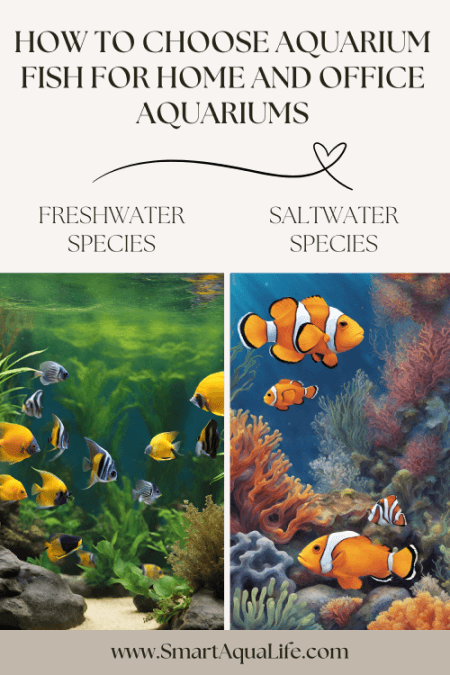
When setting up a smart aquarium, it’s vital to pick fish species that work well with smart devices and technology. Luckily, there are plenty of options to choose from that are both popular and compatible.
Freshwater Species:
- Angelfish, known for their graceful appearance and distinctive fin shapes, add elegance to any aquarium setting.
- Discus, with their vibrant colors and unique body shapes, are prized by hobbyists for their beauty and personality.
- Cichlids, renowned for their diverse coloration and interesting behaviors, offer aquarists a wide range of species to choose from, each with its own characteristics and requirements.
Saltwater Species:
- Clownfish, famously known as the charming stars of “Finding Nemo,” are vibrant and hardy fish that adapt well to aquarium life.
- Gobies, with their fascinating behaviors and small size, are perfect for nano and smart aquarium setups, adding activity and intrigue to the tank.
- Tangs, also known as surgeonfish, come in a variety of colors and patterns, making them prized additions to saltwater aquariums. Their active nature and algae-eating habits contribute to a balanced ecosystem within the tank.
Fish species compatible with smart devices seamlessly integrate with advanced technology, enhancing the aquarium experience for enthusiasts. They thrive in technologically advanced environments and allow for easy monitoring and management through smart devices. By selecting compatible species, aquarists can fully utilize smart aquarium technology benefits. This includes monitoring water parameters, adjusting lighting schedules, and automating feeding routines. Additionally, the popularity of these species ensures ample resources and support for enthusiasts of all levels, enabling visually stunning smart aquariums.
Compatibility of Freshwater and Saltwater Species with Smart Devices
When choosing fish for a smart aquarium, it’s crucial to prioritize compatibility with smart devices. While numerous freshwater and saltwater species can flourish in smart aquarium setups, it’s essential to thoroughly research their requirements. This includes compatibility with smart technology, ensuring successful integration. Such research maximizes the benefits of smart aquarium features while meeting the needs of aquatic inhabitants.
Aquarium Maintenance and Care Tips
Regardless of the fish species you choose, proper maintenance and care are essential. They ensure your aquarium’s health and your fish’s happiness. Regular water changes, monitoring water parameters, and providing a balanced diet are crucial aspects of aquarium maintenance. By staying proactive and attentive to your aquarium’s needs, you can create a thriving environment for your aquatic pets.
Essential Aspects of Aquarium Maintenance
Routine maintenance tasks such as water changes, filter cleaning, and water parameter testing are essential for maintaining a healthy aquarium environment. By staying consistent with these tasks and addressing any issues promptly. You can prevent common problems and promote the well-being of your fish.
Enhancing Fish Selection with Technology
Smart devices offer valuable assistance in the fish selection process. They provide insights into crucial parameters like water quality and temperature. Aquarists can leverage these tools to gather accurate data and make informed decisions when choosing fish for their aquariums. By utilizing smart technology, they can create an optimal environment. It’s tailored to the specific needs of their aquatic pets, ensuring their health and well-being.
Personal Experience and Recommendations
In my experience as an aquarium enthusiast, thorough research and careful consideration are key. Combining personal insights with research-backed recommendations is essential. This approach allows you to create a unique and personalized aquarium setup. It meets the needs of both you and your fish. Remember to take your time, do your research, and enjoy the process of building and maintaining your aquarium.
Conclusion
Choosing aquarium fish for home and office aquariums is a rewarding endeavor that requires careful consideration and planning. Understanding your fish’s needs and researching compatible species are essential. Leveraging smart technology benefits can create a vibrant aquatic environment, bringing joy and tranquility to your space. With the right knowledge and tools at your disposal, successful fishkeeping is within reach for enthusiasts of all levels.

FAQs (Frequently Asked Questions)
Q: What are some beginner-friendly fish species for home aquariums?
A: Some beginner-friendly options include tetras, guppies, and mollies.
Q: Can I keep fish in an office aquarium with minimal maintenance?
A: Yes, low-maintenance species like bettas and neon tetras are suitable for office environments.
Q: How can smart technology enhance the fish selection process?
A: Smart technology offers automated feeding schedules, remote monitoring capabilities, and customizable lighting options. This makes it easier to care for your fish.
Q: What are some popular fish species for smart aquariums?
A:Freshwater species like angelfish, discus, and cichlids are popular choices for smart aquariums. Similarly, saltwater species like clownfish and tangs are also favored selections.
Q: What maintenance tips are essential for keeping aquarium fish healthy?
A: Regular water changes, monitoring water parameters, and providing a balanced diet are crucial for maintaining a healthy aquarium environment.


